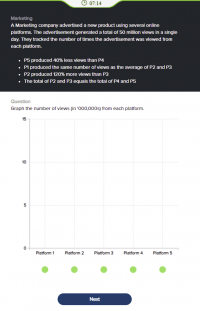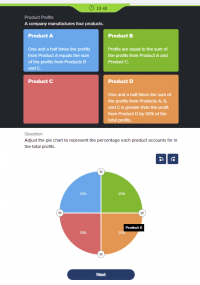bushra1175
Junior Member
- Joined
- Jun 14, 2020
- Messages
- 59
I was hoping I could get some clues on how to work this out. I completely skipped the question because I didn't know where to begin. They didn't give me any starting values for any of the periods.
I only have one assumption. It says P2 & P3 equals P4 & P5. I would assume this means both sides equal 50%. I can't make sense of the other points. Some hints would be much appreciated.

I only have one assumption. It says P2 & P3 equals P4 & P5. I would assume this means both sides equal 50%. I can't make sense of the other points. Some hints would be much appreciated.


